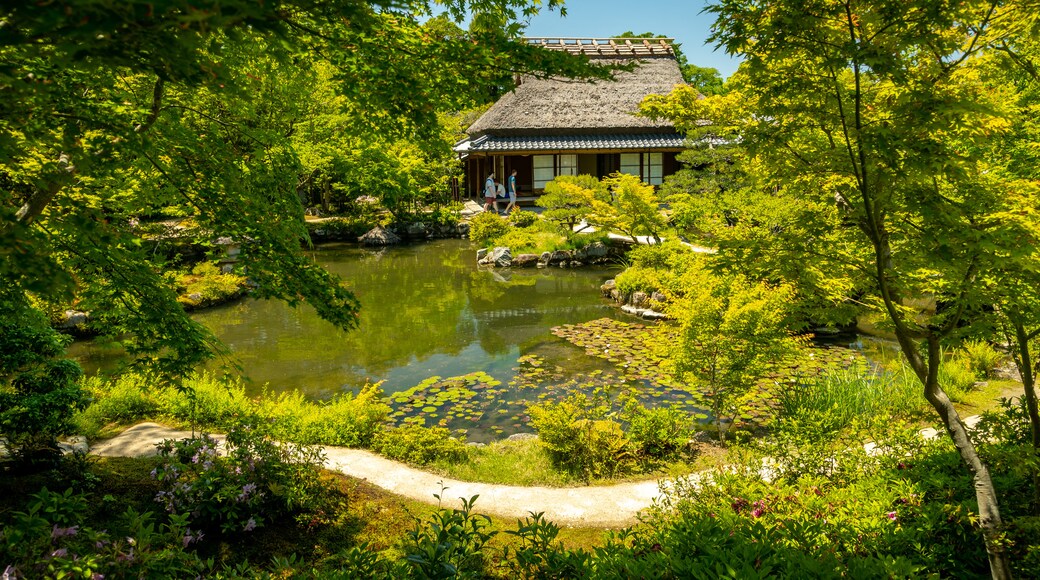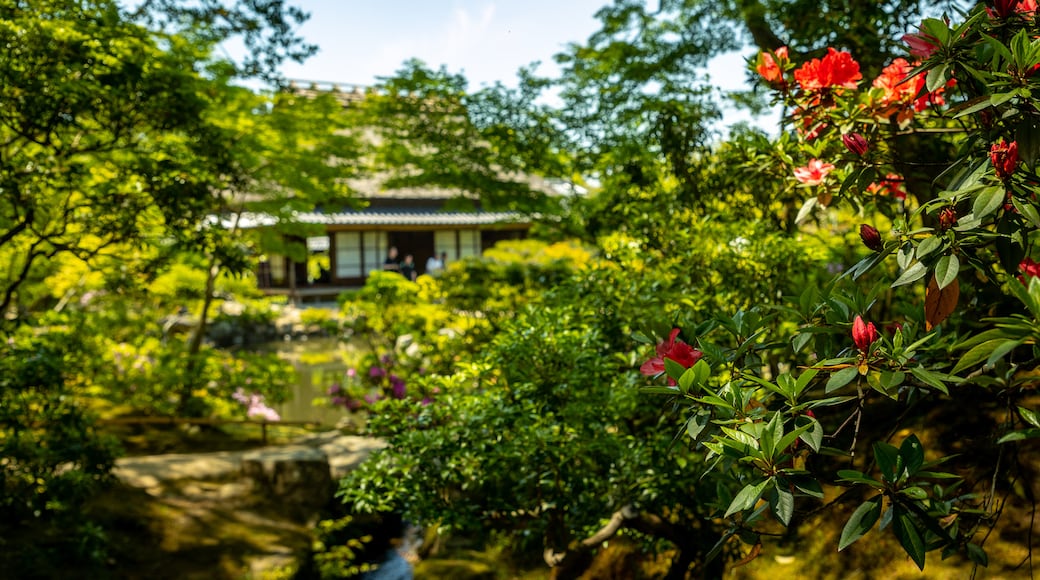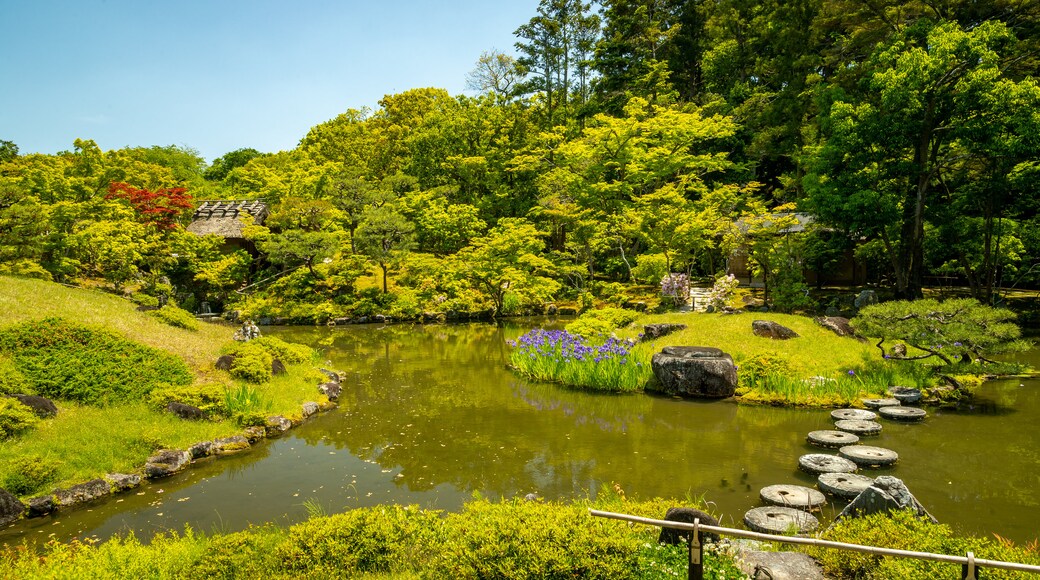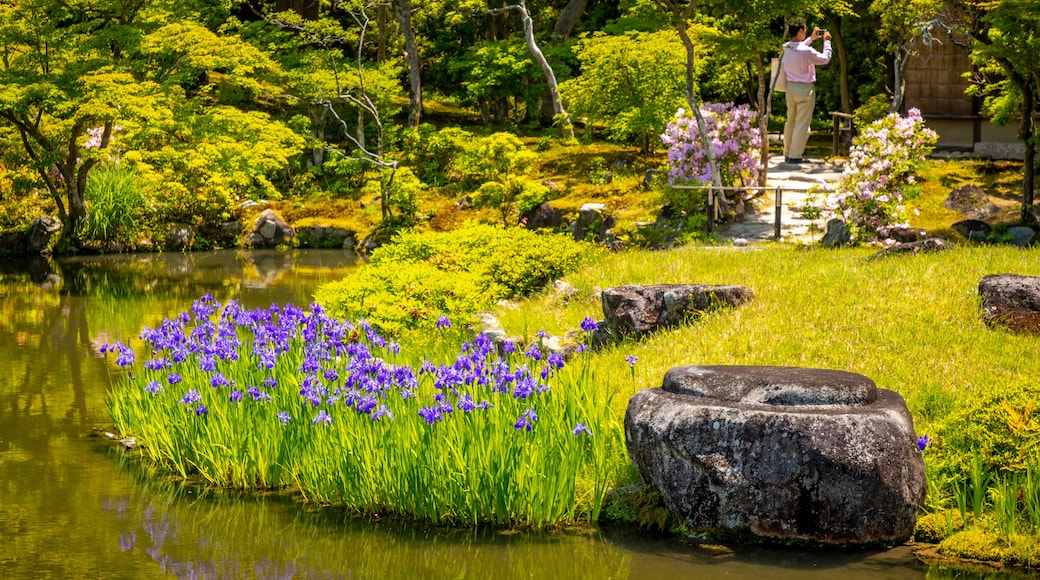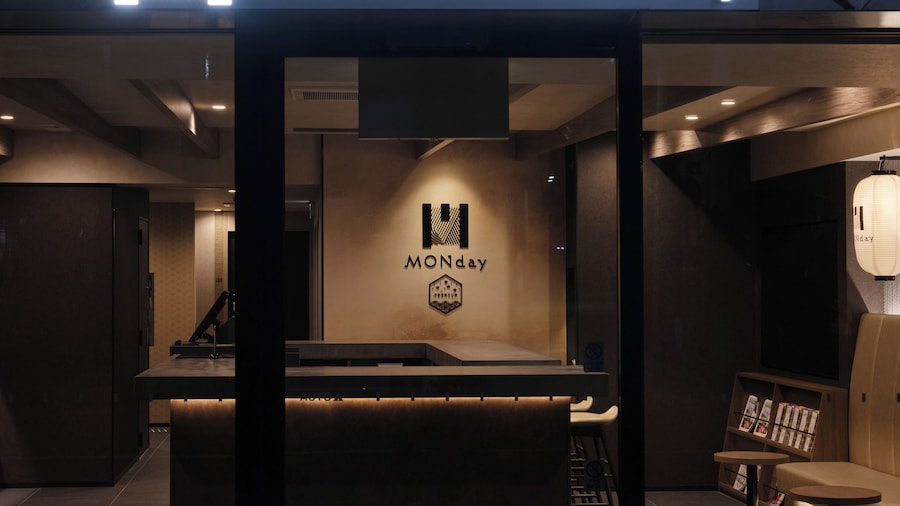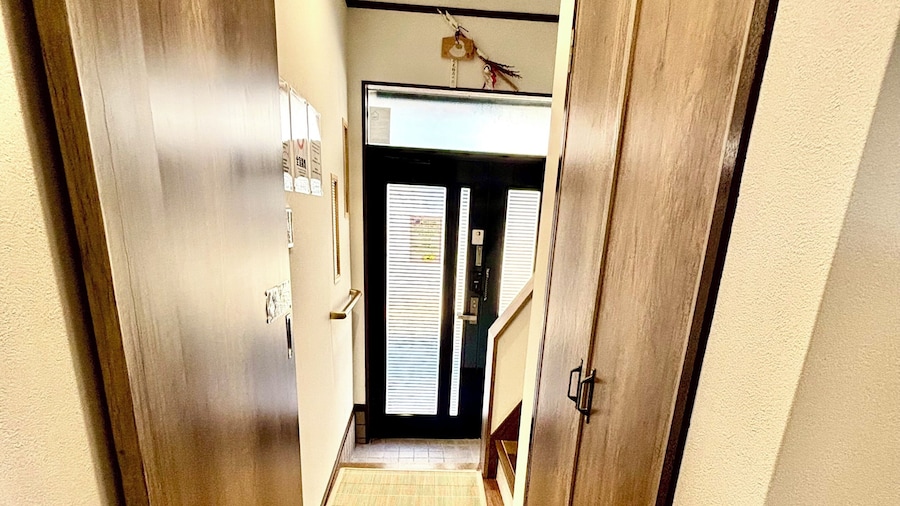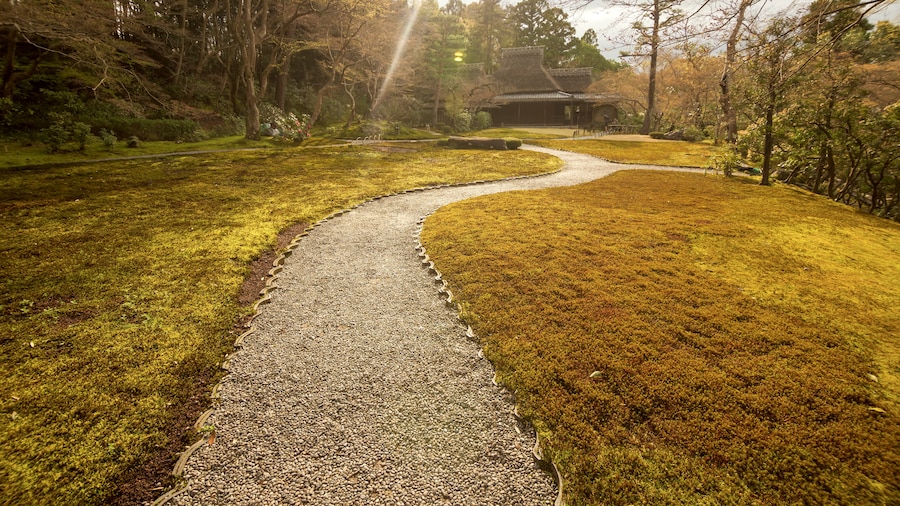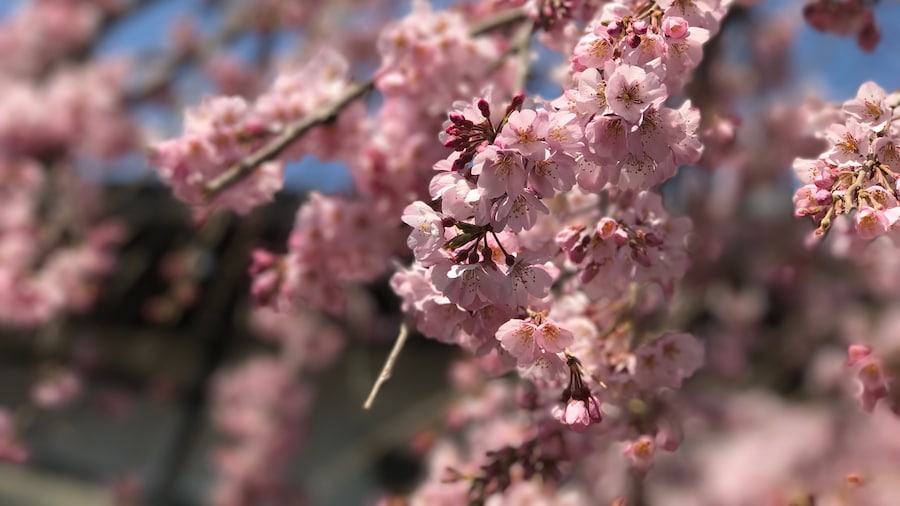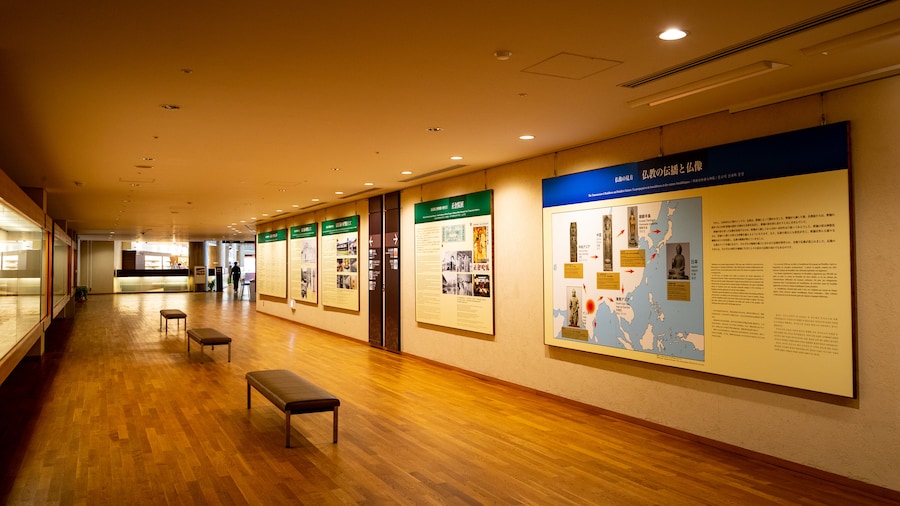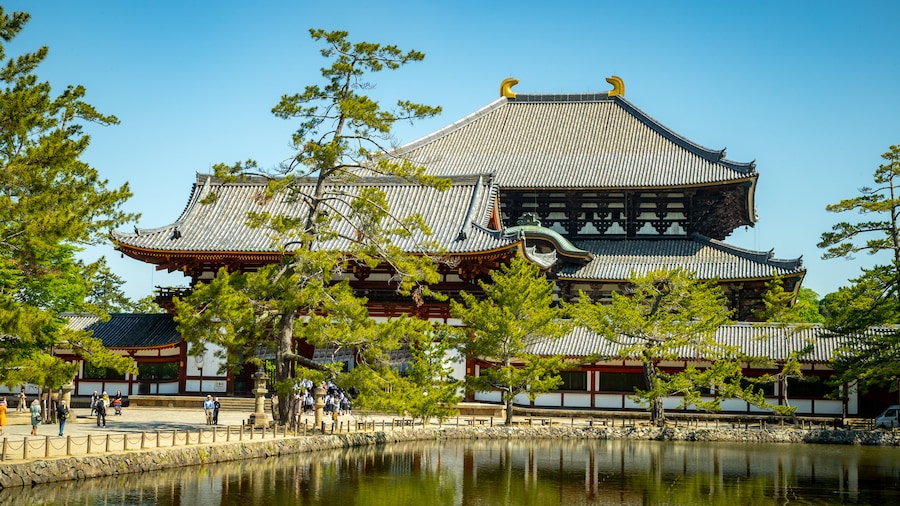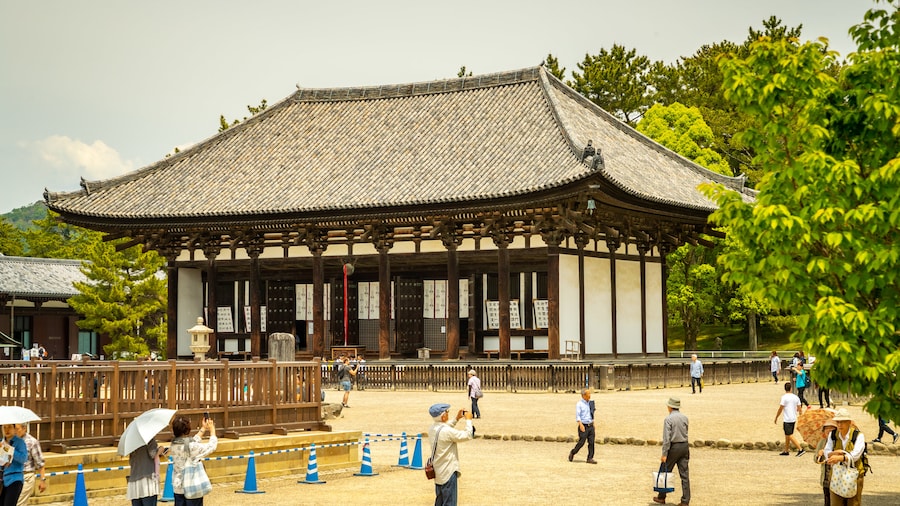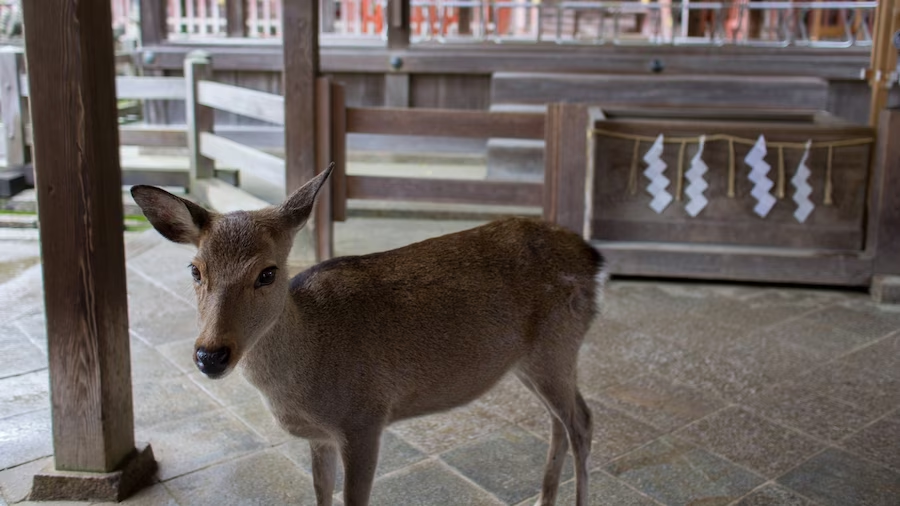Visit Isui-en Garden, one of Nara’s most beautiful parks. It follows the shakkei concept of borrowed scenery by incorporating views of the Todaji Temple and Nara’s mountainous backdrop. Established in the late 1700s, Isui-en Garden was once an elite attraction for wealthy merchants and the upper class. Today, appreciate the charms of its lush lawns, water features and multiple teahouses, which are open for all to experience.
Discover two distinct sections when visiting the garden. The Front Garden dates to the early Edo period and was built for an affluent textile merchant. It includes a teahouse and villa that overlook a pond surrounded by decorative trees. Bask in the serene and intimate ambiance while sipping green tea and sampling Japanese confectionary at the 17th-century Sanshutei Teahouse.
Relax with a walk along the pathways, bridges and stone stairways of the Back Garden. Trails wind around reflective ponds, past waterfalls and over humanmade hills. A local businessman designed this strolling garden for tea ceremonies and poet gatherings in the early 20th century. Stop at the teahouses, gaze toward Nara’s three sacred hills and spot the Nandaimon Gate of the Todaji Temple.
The changing seasons bring a variety of dazzling colors to Isui-en Garden. See camellias in February, cherry blossoms in April and water lilies in June. Set aside time to peruse an exquisite collection of treasures at the Neiraku Museum of Art. Highlights include Chinese bronzes, Korean ceramics and paintings by Edo-era artist Tanomura Chikuden.
Find the garden near Nara Park, east of central Nara. Take a public bus to the Kokuritsu Hakubutsukan or Oshiagecho stop or walk for 15 minutes from Kintetsu-Nara train station. If you drive, look for a metered car park in the area.
Isui-en Garden is open daily in April, May, October and November. From December to March and June to September it closes on Tuesdays. There is an admission fee, with discounts for children. Fees include entrance to the art museum.
